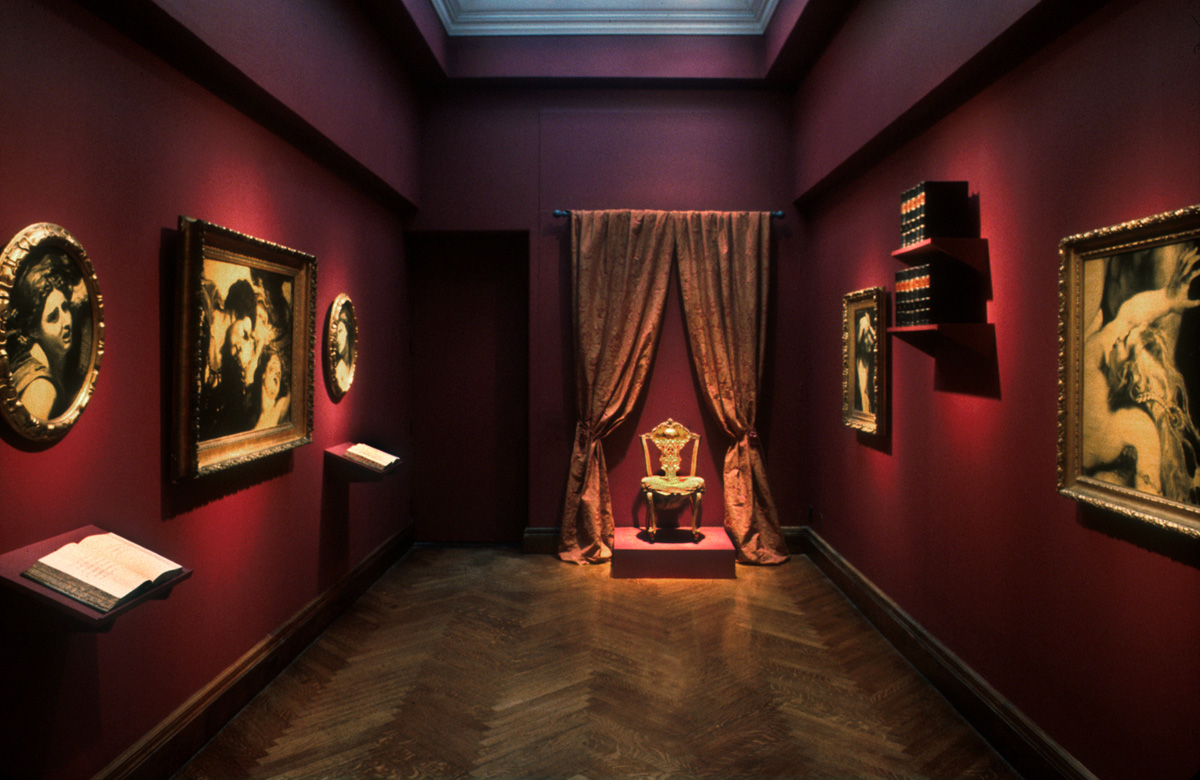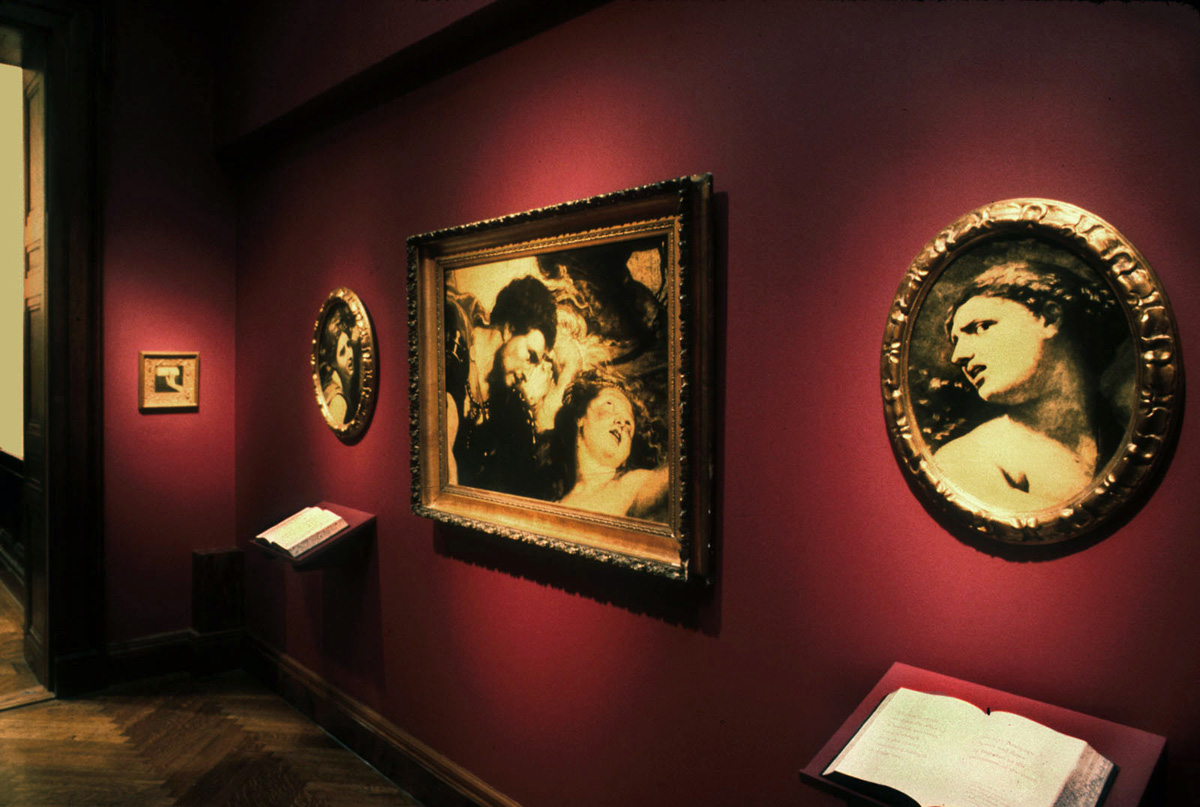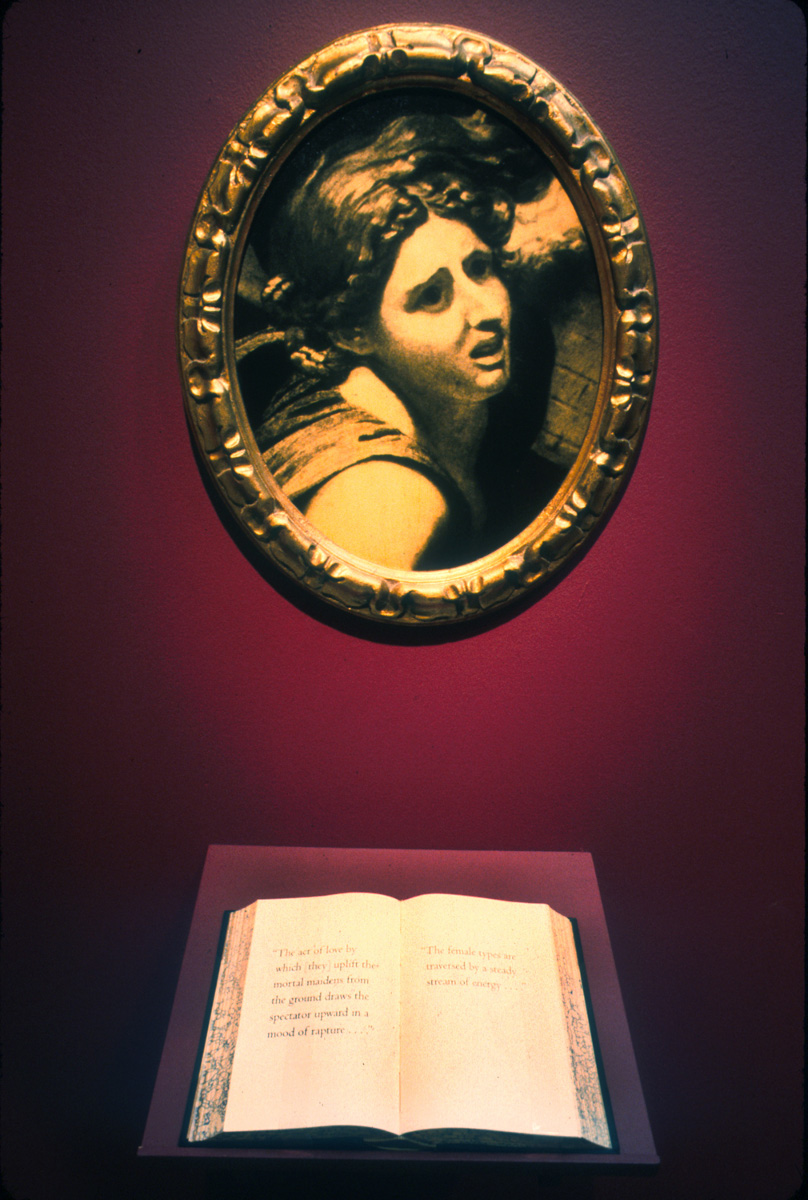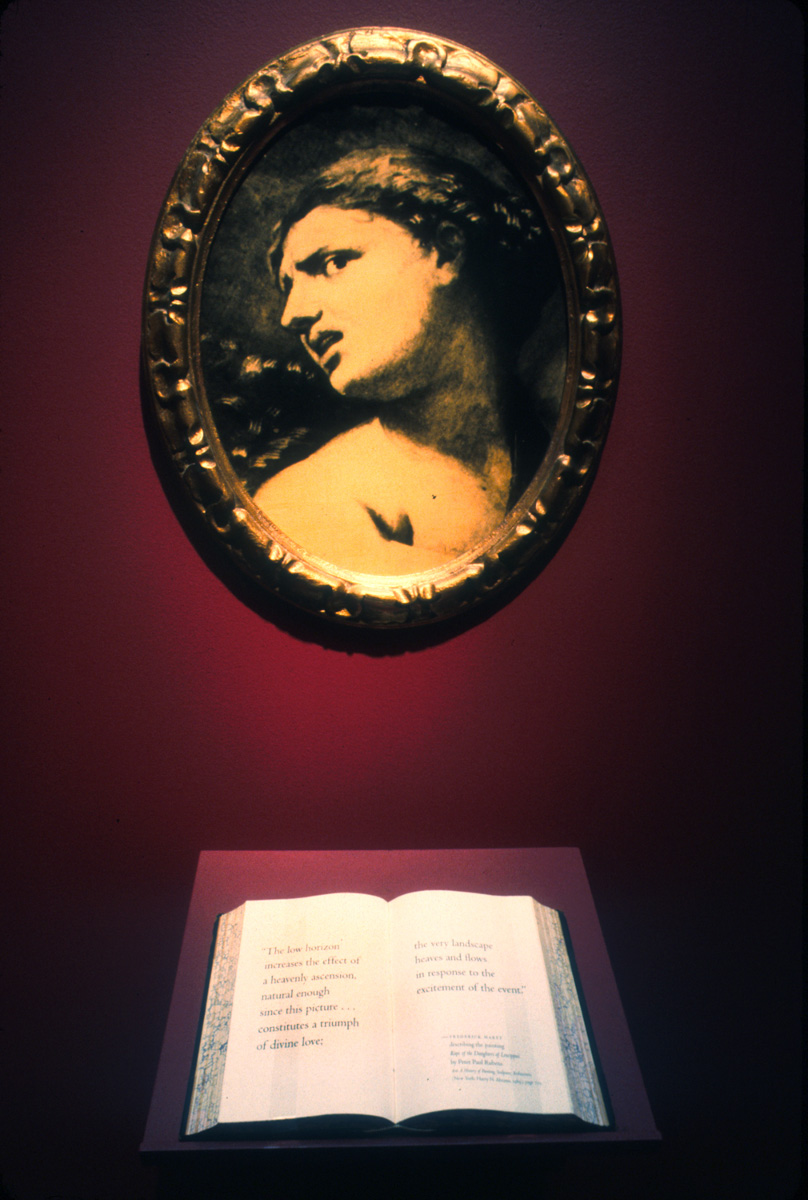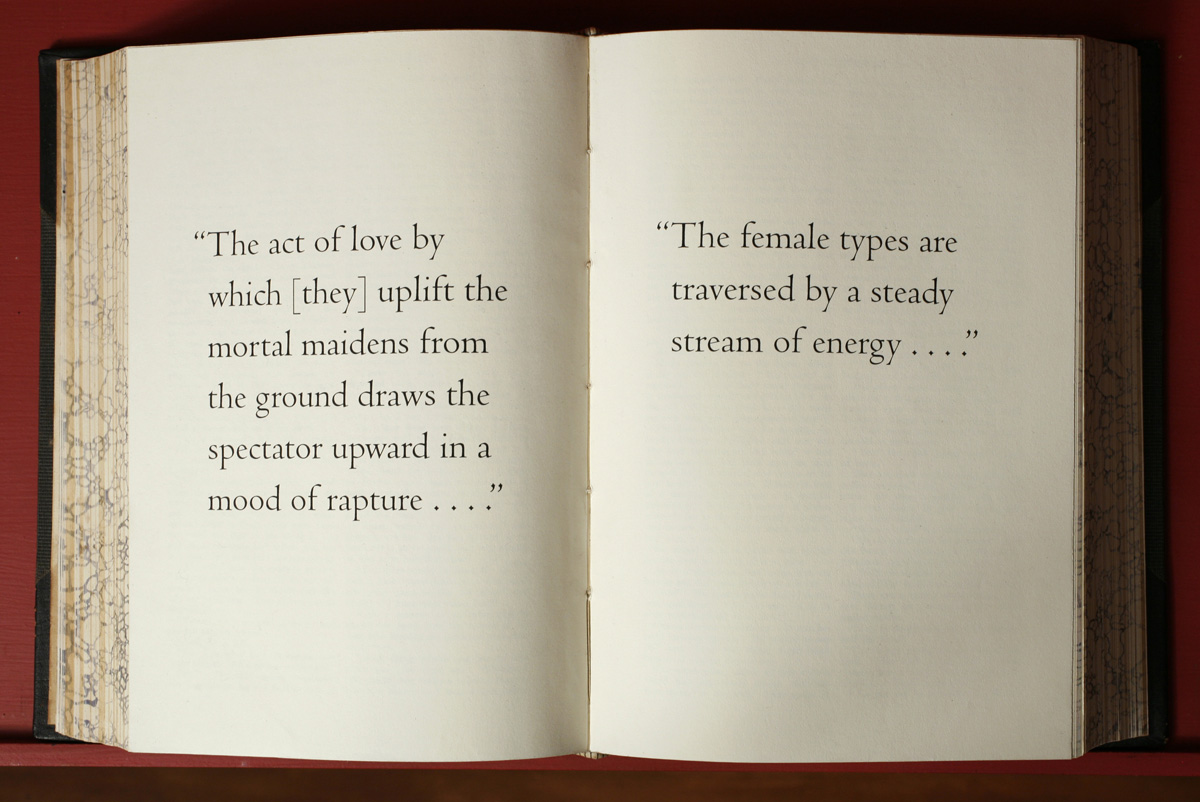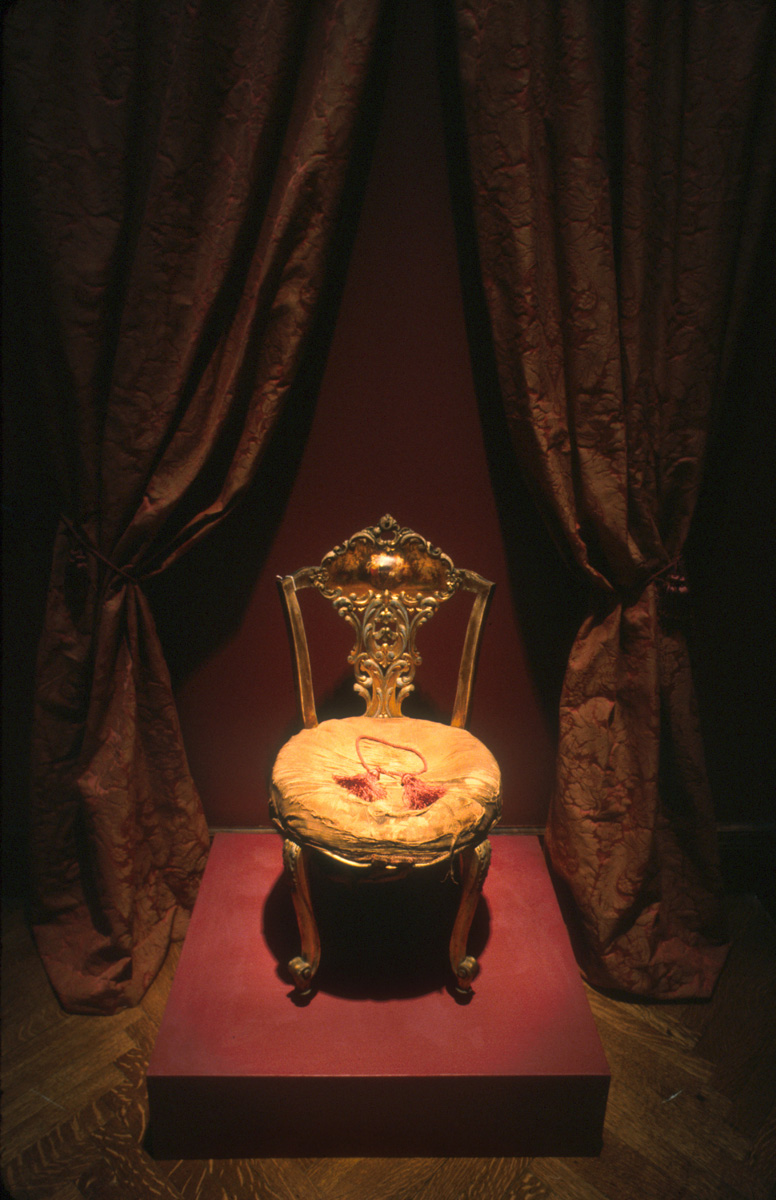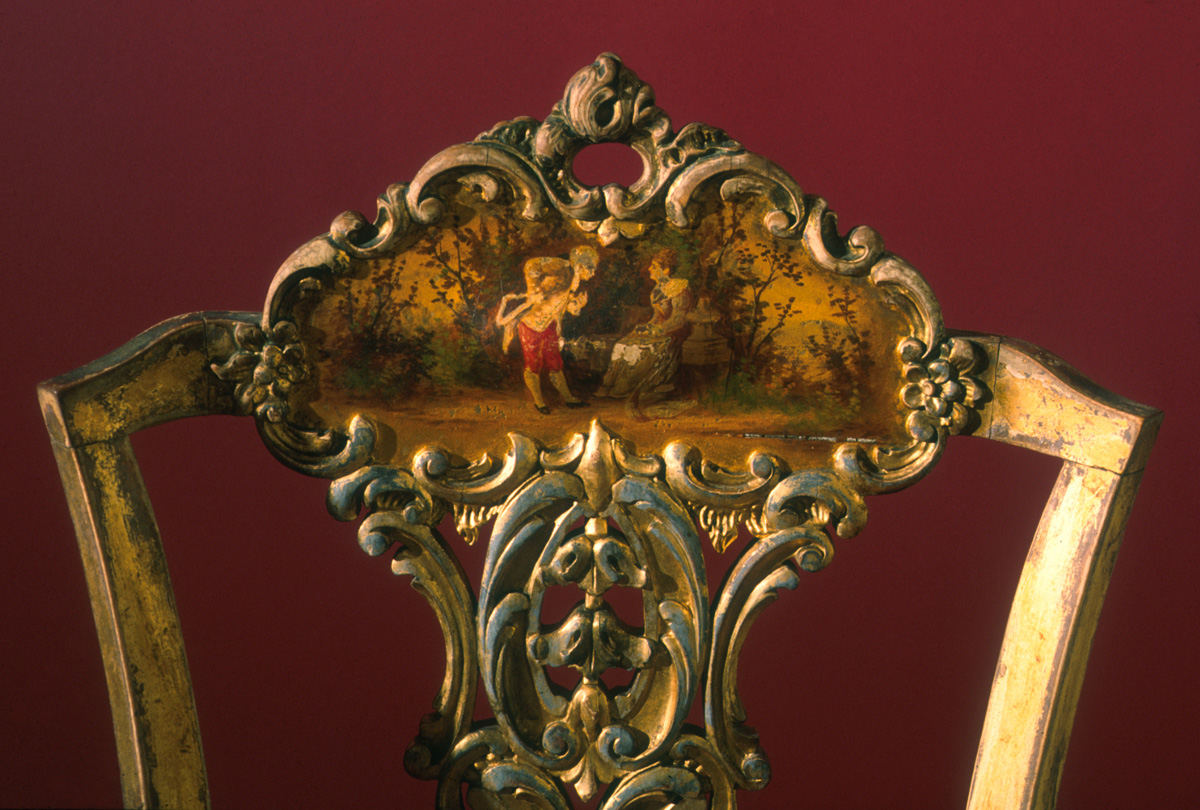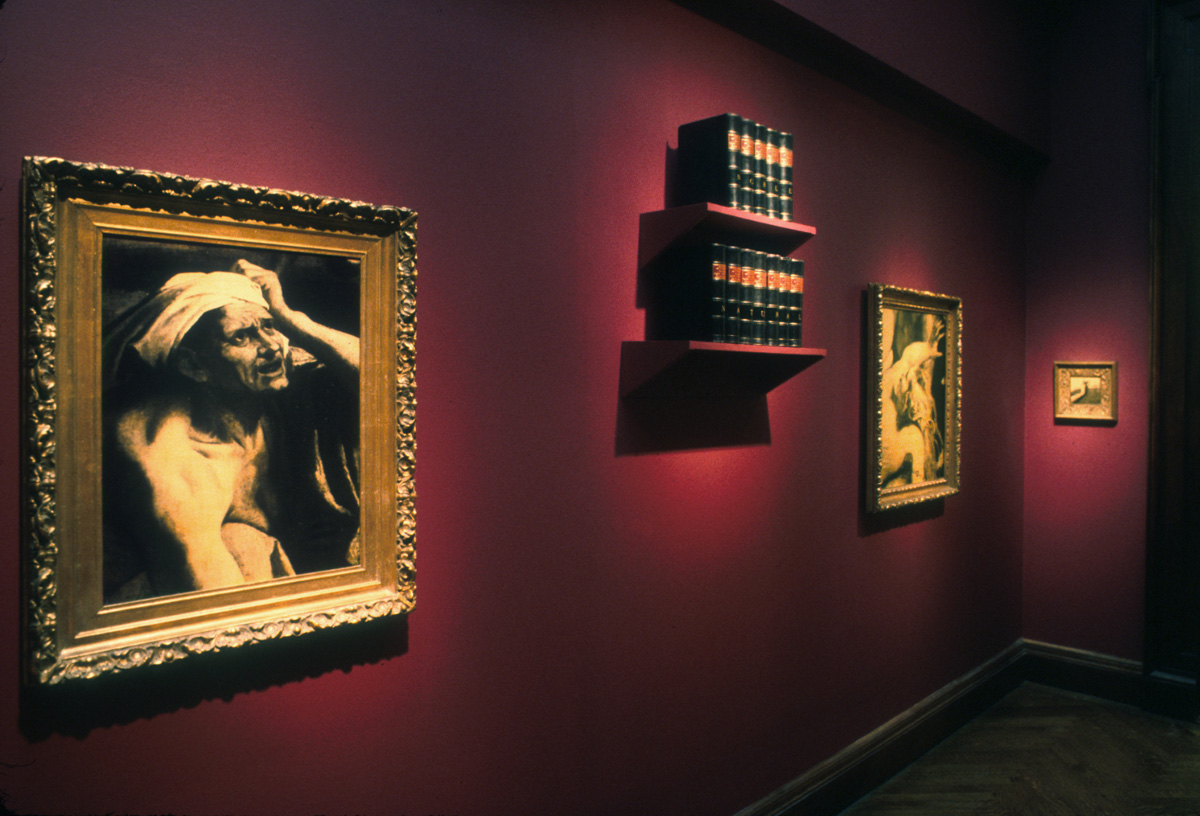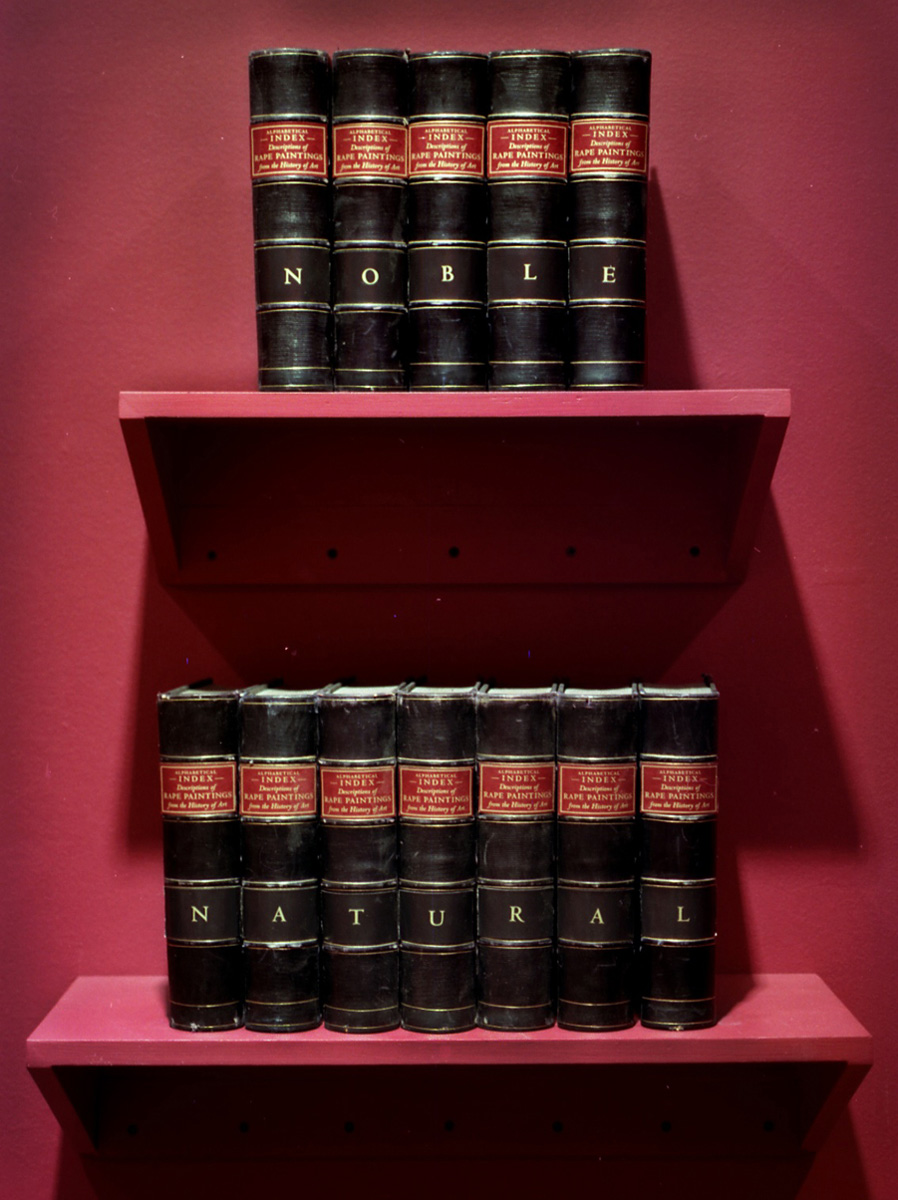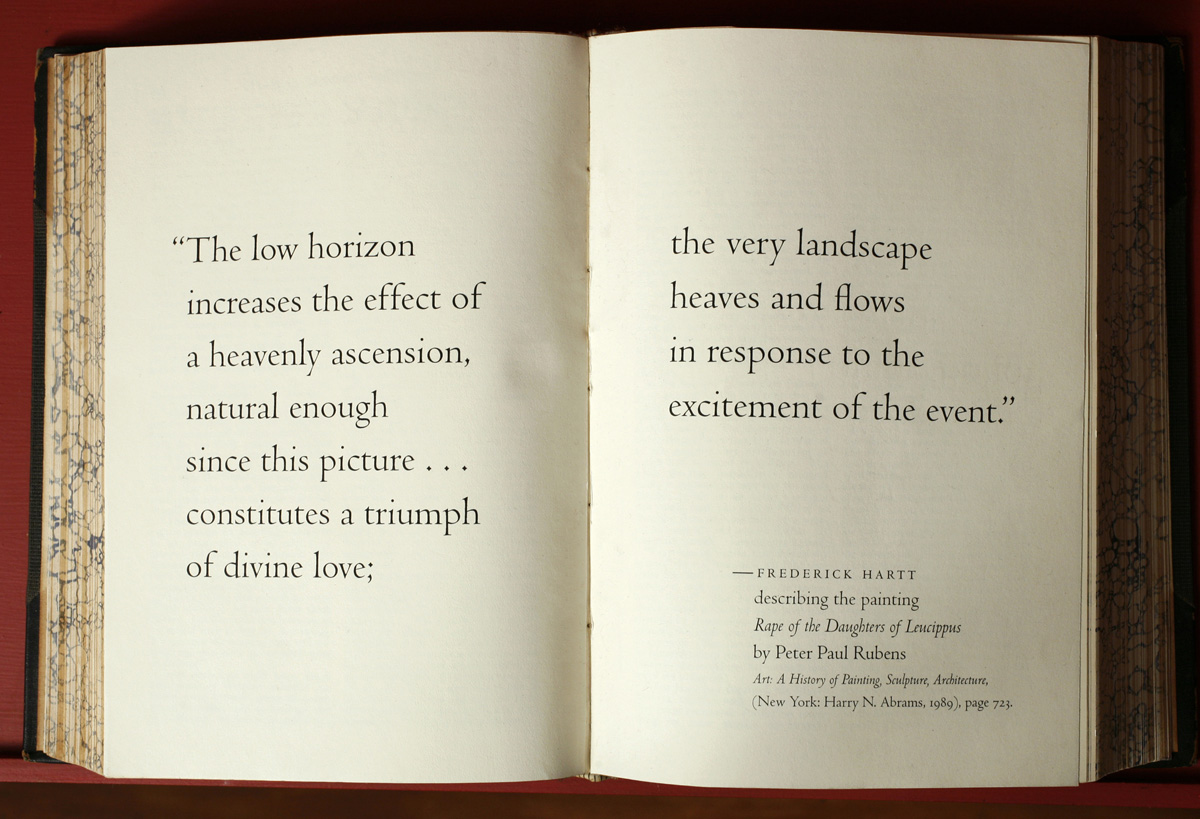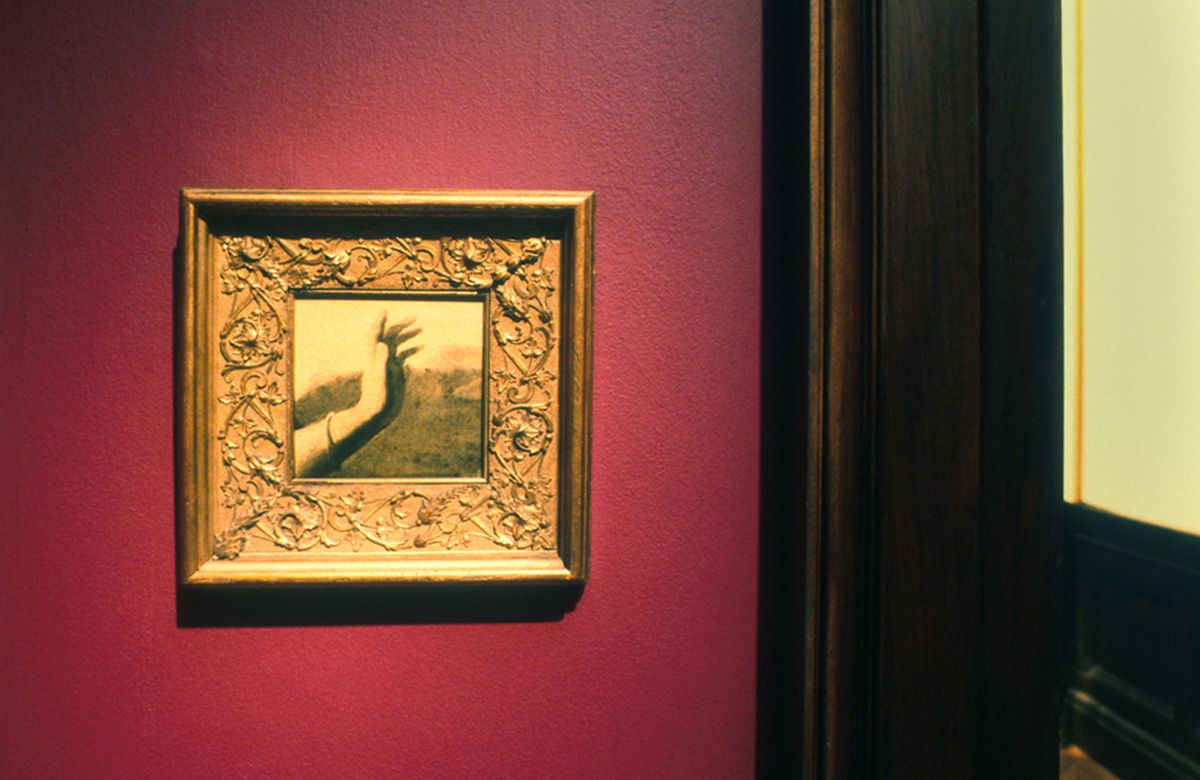Description
A viewer to Fessler’s Art History Lesson Installation, 1994, finds herself in a “masterwork” gallery, where all of the paintings appear to have yellowed with age. On display are fragments of rape and abduction paintings by Rubens and Poussin. The salacious content has been cut away and only the gestures and faces of the terrified women remain.
The room includes a plinth with a distressed decorative chair that has a tiny painting of a man bowing to a seated woman. Is this scene meant to be an ironic counterpoint to the paintings in the room, or a suggestion that formality and manners are the only hope for civility between the sexes?
Below two oval paintings of women’s faces—one looking directly at the viewer—there are books open to quotes from an art history survey textbook, describing one of the paintings on view. Frederick Hartt’s description of Rape of the Daughter’s of Luccippus reads: “The low horizon increases the effect of a heavenly ascension, natural enough since this picture … constitutes a triumph of divine love; the very landscape heaves and flows in response to the excitement of the event.”
On the opposite wall two groups of books rest upright on shelves. The spines read Alphabetical Index – Descriptions of Rape Paintings from the History of Art. Some of the books from the Alphabetical Index seem to me missing. As a result, the index letters on their spines spell out NOBLE and NATURAL, two words used by H. W. Janson to describe Poussin’s Rape of the Sabine Women in his survey textbook History of Art.
Information
Art History Lesson, installation by Ann Fessler, 1994
Medium: photo linen canvas stained with oils; gilded frames; furniture; curtain; Alphabetical Index, altered books with applied spine labels; open books with pages inserted
The images document Art History Lesson as it was installed in the 1995 exhibition, Going for Baroque: 18 Contemporary Artists Fascinated with the Baroque and Rococo, at the Walters Art Museum, Baltimore, Maryland. The exhibition, which included artists Ken Aptekar, Jeff Koons, Cindy Sherman Yasumasa Morimura, and others, was currated by Lisa Corrin in collaboration with Joaneath Spicer. Each artist’s work was embedded within the museum collection, near relevant museum holdings. A catalog with essays by Corrin, Spicer, Gail Feigenbaum, and Irving Lavin accompanied the exhibition.


